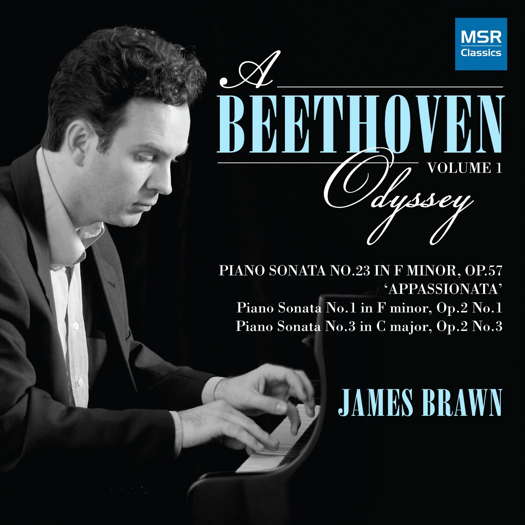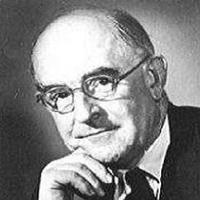- The Cunning Little Vixen
- Edvard Mirzoyan
- mvdaily
- Isaac Stern
- Elisabeth Chojnacka
- Fredrik Vilhelm Ludvig Norman
- Ossetia
- Opera Factory
 SPONSORED: CD Spotlight. Masterfully Controlled - James Brawn's Beethoven Odyssey impresses Andrew Schartmann.
SPONSORED: CD Spotlight. Masterfully Controlled - James Brawn's Beethoven Odyssey impresses Andrew Schartmann.
All sponsored features >>
 SPONSORED: Ensemble. Unjustly Neglected - In this specially extended feature, Armstrong Gibbs' re-discovered 'Passion according to St Luke' impresses Roderic Dunnett.
SPONSORED: Ensemble. Unjustly Neglected - In this specially extended feature, Armstrong Gibbs' re-discovered 'Passion according to St Luke' impresses Roderic Dunnett.
All sponsored features >>

An Epic Undertaking
Hänssler Classic's C P E Bach edition, recommended by GERALD FENECH
'... an exhilarating collection of C P E Bach's works ...'
The life of Carl Philipp Emanuel Bach, the most eminent successor of his father's patrimony, can be divided into three parts: his early life, the Berlin years and the Hamburg years. Born on 8 March 1714 in Weimar, to Johann Sebastian Bach and his first wife Maria Barbara, he was their fifth child and third son. The renowned contemporary composer Georg Philipp Telemann was his godfather. When he was ten he entered the St Thomas School in Leipzig, where his father had become cantor in 1723.
He was one of four Bach children to become professional musicians; indeed, all four were trained by their father, and in an age of royal patronage, father and son alike knew that a university education helped prevent a professional musician from being treated as a servant. Carl pursued advanced studies in jurisprudence at Leipzig University in 1731 and at Frankfurt-on-the-Oder in 1735. At the age of twenty-four he obtained his degree, but never practiced law, instead turning his attention to music, body and soul.
Listen — C P E Bach: Allegro Pomposo (Keyboard Sonata In B flat, Wq 65 No 34)
(CD24 track 19, 0:00-0:55) ℗ 2021 Profil Medien GmbH :
The Berlin chapter started in 1740, when Carl, through the recommendation of a group of fellow composers - the Graun brothers, Johann Gottlieb and Carl Heinrich, and Sylvius Leopold Weiss - obtained an appointment in the service of Crown Prince Frederick of Prussia, the future Frederick the Great. Upon the Prince's accession in 1740, C P E Bach became a member of the Royal Orchestra. In the following years he composed mainly for the piano, writing about thirty sonatas and concert pieces for harpsichord and clavichord.
During his time in Berlin, Carl mixed with several accomplished musicians, some of which were students of his father. By 1742 his reputation as a composer of piano music was unblemished, and the two sets of sonatas which he published with dedications to Frederick the Great (1742) and Charles Eugene, Duke of Wurttemberg (1744) continued to enhance his fame. In 1746 he was promoted to the post of chamber musician, serving the King alongside other eminent composers of the time. During his time in Berlin, Bach composed a Magnificat (1749), an Easter Cantata (1756), several symphonies and concert works, at least three volumes of songs, and a few secular Cantatas and other occasional pieces.
Listen — C P E Bach: Dich Sahen Wir Gemartert Und Zerschlagen
(Nun Danket Alle Gott)
(CD46 track 2, 0:01-0:46) ℗ 2021 Profil Medien GmbH :
Still, his main compositions were concentrated on the piano, for which, at this time, he wrote nearly two hundred sonatas. He wrote a treatise called An Essay on the True Art of Playing Keyboard Instruments that took the music world by storm. Immediately recognized as a definitive work, both Haydn and Beethoven took it to heart, and by 1780 the book was in its third edition. Indeed, C P E Bach's techniques are still employed today.
Listen — C P E Bach: Prussian Sonata No 1 in F
(CD1 track 1, 0:00-0:43) ℗ 2021 Profil Medien GmbH :
In 1768 C P E Bach was permitted to relinquish his position in order to succeed Telemann as director of music in Hamburg. Upon his release, he was named court composer for Frederick's sister, Princess Anna Amalia. The title was honorary, and interest in the oratorio genre may have played a role in nurturing the ambitious choral works that followed. In his new position, C P E Bach began to turn more of his energies to ecclesiastical and choral music, as he soon found out that the job required a steady production of music for Protestant church services at St Michael's Church in Hamburg and elsewhere.
Listen — C P E Bach: Aria (Cantata For Pastor Joh Jacob Schaffer, H 821m)
(CD48 track 12, 0:00-0:47) ℗ 2021 Profil Medien GmbH :
Between 1768 and the year of his death, C P E had amassed twenty-one settings of the Passion, some seventy cantatas, litanies, motets and other liturgical pieces. He also presented a number of works by his contemporaries, including those of his father. In the year of his demise, his greatest oratorio, The Resurrection and Ascension of Jesus, was conducted by none other than Mozart.
C P E Bach married Johanna Maria Dannemann in 1744. Only three of their children lived to adulthood, but the most promising of these, Johann Sebastian 'The Younger', a promising painter, died in 1778, aged only twenty-nine. C P E Bach died in Hamburg on 14 December 1788, and was buried in St Michael's Church in the same city.
Throughout the later half of the eighteenth century, the reputation of C P E Bach stood very high, surpassing even that of his father. Haydn and Beethoven admired him no end and even collected his music; Mozart said of him: 'Bach is the father, we are the children.' His work is full of invention and, most importantly, extreme unpredictability and wide emotional range, even within a single work, are hallmarks of his compositions, whatever the genre.
Listen — C P E Bach: Prestissimo (Symphony in E flat, Wq 179)
(CD34 track 7, 0:01-0:50) ℗ 2021 Profil Medien GmbH :
C P E was probably the first composer of eminence who made free use of harmonic colour for its own sake, and he exerted enormous influence on the North German school. This was not only limited to his contemporaries but also the composers who came after him. Mendelssohn and Weber are two great names that benefited from Bach's innovations.
His name fell into neglect in the nineteenth century, but by the early twentieth he started to make a comeback, and with Helmut Koch's recording of his symphonies and Hugo Ruf's recordings of his keyboard sonatas in the 1960s, his rehabilitation was truly on the way.
As to this complete edition spread over sixty CDs, I have nothing but superlatives. This is an exhilarating collection of C P E Bach's works, who for some time was better known than his father. Indeed, the music on these discs explains why that was the case.
Listen — C P E Bach: Allegro (Piano Concerto in D, Wq 11 No 3)
(CD59 track 3, 4:44-5:44) ℗ 2021 Profil Medien GmbH :
This towering musical document is also a profound insight on the development of the baroque to the classical, regarding style and structure. A pyramid of inestimable musical beauty that should keep you company for years on end. Sound quality can sometimes vary slightly, but when one keeps in mind that this is a project that was spread over a huge number of recording sessions, that is understandable. Otherwise, this is an epic undertaking that deserves my unconditional recommendation.
Copyright © 26 October 2021
Gerald Fenech,
Gzira, Malta

CD INFORMATION: EDITION C P E BACH
MORE CLASSICAL MUSIC ARTICLES ABOUT GERMANY


